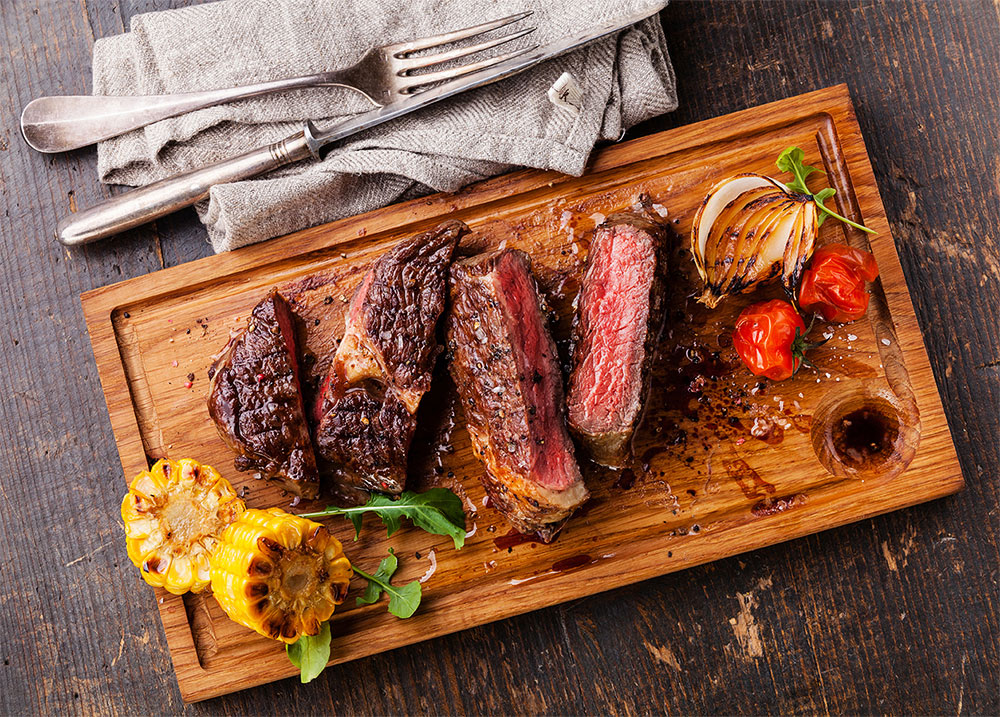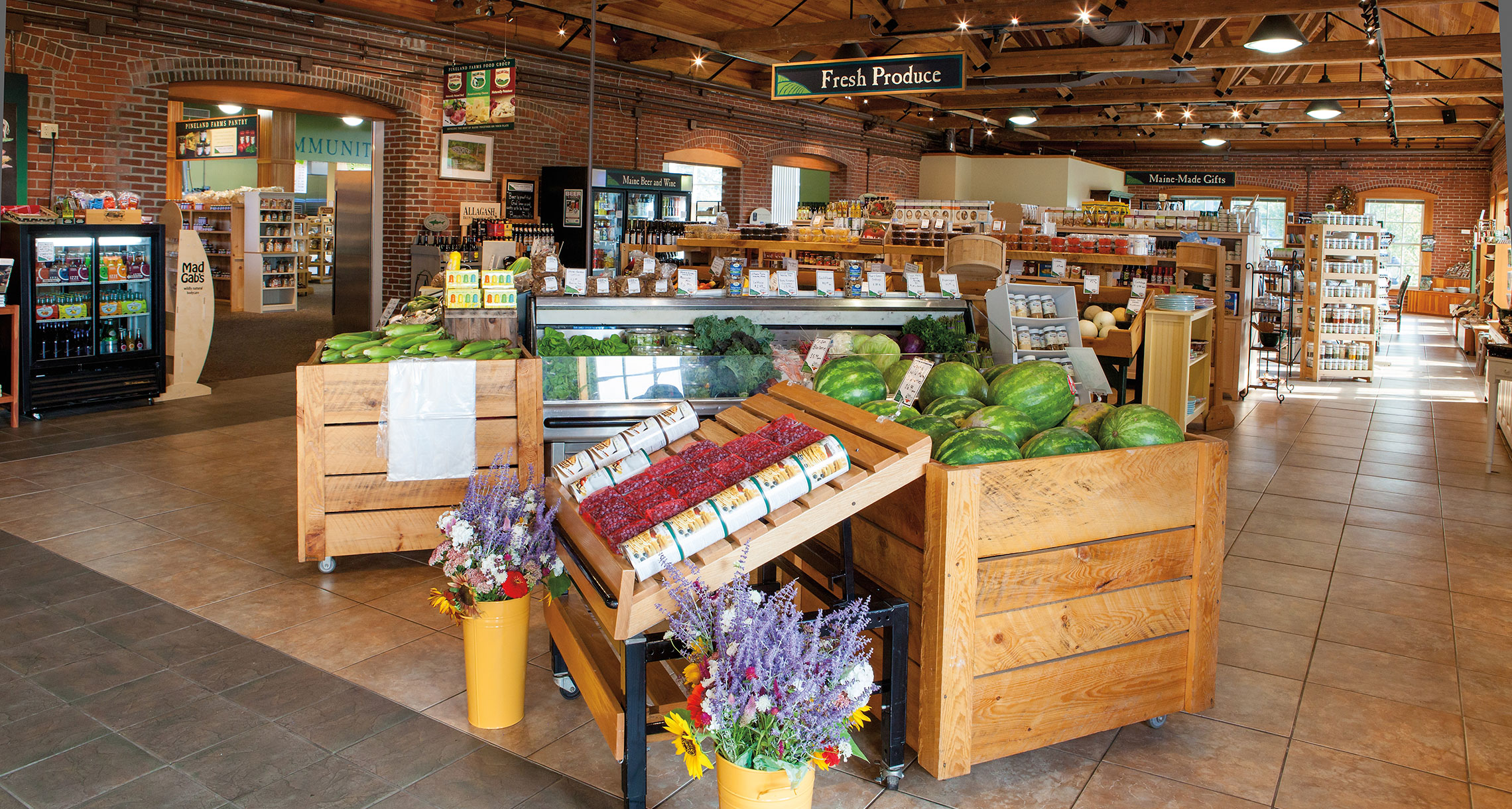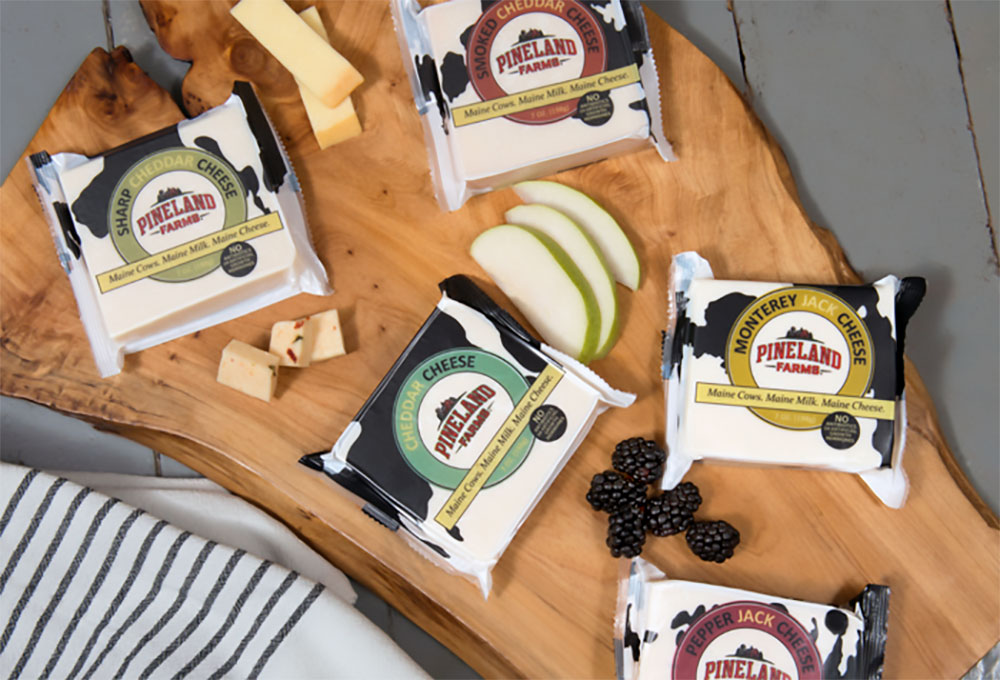10 Things You Need to Know Before Fat Biking in the Snow
Fat bikes are on the rise, and they allow bikers to continue pedaling through the snow when winter hits. Biking doesn’t have to be seasonal anymore.
Many shops have started recommending fat bikes over other bikes thanks to their versatility, rollover ability and sheer gumption to conquer any terrain. They’re a blast to ride on almost any trail, regardless of the time of year or whether or not there’s snow on the ground, and they extend a cyclist’s season.
Pineland Farms offers fat biking through the winter, with rentals available or the option to bring your own bike. Check our trail conditions daily for the most up-to-date status of our trails.
Before buying your own bike or borrowing one of ours to hit our trails, here are 10 things you need to know:
1. Why ride a fat bike?
Fat bikes are mountain bikes. They behave like mountain bikes, and you can ride them everywhere. They’re also great beginner bikes.
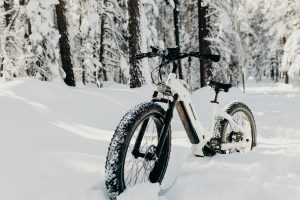
2. Bike selection
Lately, the fat bike market has exploded. As a result, companies are now offering frames in almost every conceivable material, including aluminum, carbon, titanium, bamboo, real steel and Wal-Mart steel. Most fat bikes are fully rigid beasts, but in the past few years, suspension forks have been honed and mass-produced. Several smaller builders are offering fully custom full-suspension frames as well.
As with any bike purchase, zeroing in on the right fat bike depends principally on the type of riding you plan to do, as well as on your budget. The right bike will optimize your fat biking experience.
For more tips on how to choose the right fat bike for you, check out ICan Cycling’s fat bike buyer’s guide.
3. Application
Traditionally, fat bikes, also known as “fatties,” have handled differently than other mountain bikes, which have made them both fun and a little bit strange. However, many newer models are similar to more traditional mountain bikes, which have slacker head tube angles, lower stand-over heights, thru axles and tapered head tubes that let you rule the mountain.
The differences that fatties offer are actually what make riding a bike like this interesting. Wider tires provide more traction in both dirt and snow, and they climb uphill like no other bike can. Their voluminous tires provide some suspension (40-50mm). A rigid bike will always be a rigid bike, but fortunately, you don’t lose the same energy due to pedal bob, so the fun bouncy feeling you get while fat biking is not wasted effort.
You can ride fat bikes year-round on flat, snow-covered meadows, steep and deep backcountry trails, local single track trails, around town, and even double diamond trails during warmer months. You can ride them just about anywhere you can imagine riding a bike. They corner better than almost any bike and are fun to lock up and slide around on packed snow/ice. Most trails are rideable year round, and there are a few groomed cross country ski trails across the US that are allowing fat bikes to tour as well.
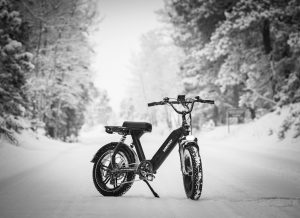
4. Weather
Most people don’t ride when it’s cold because, well, it’s cold. Fat bikes offer a unique experience and allow you to explore familiar trails in a new light, but you have to think a little bit more before and during your ride if you want to stay comfortable. A little bit of wind can drop the enjoyment factor exponentially if it’s already cold outside, so a 12mph cruise on a flat, open field can be more brutal than a sheltered climb in similar weather. Humidity can make the cold feel colder too, so dress appropriately. High-alpine riding should be reserved for more experienced riders.
5. Clothing
Depending on where you ride, dressing in layers and carrying a pack to store those layers is the most important part of riding in the winter. It’s just as easy to overheat, sweat and suffer hypothermia when riding in the cold as it is to under-dress and be extremely uncomfortable. Wearing a ski helmet and goggles are an ideal way to keep your head and face warm, and they provide a lot of protection as well. Pogies, which are insulated covers for your hands, are the best way to keep your hands warm and avoid frigid digits. A good rule of thumb is to dress like you’re going skiing.
6. Hydration
Putting fluids in your tank is often more important in the winter than the summer, especially if you ride at high altitude, due to insensible respiratory losses. While your breathing rate increases, you may not feel the urge to consume water.
Protecting your water from freezing, however, is the most important challenge when fat biking in freezing temperatures. For shorter rides, carry an insulated water bottle and start with very warm or hot water. This will allow you to hydrate, but will keep the water warm enough throughout your ride so as to not freeze.

7. Pedals
Clipless pedals are fine for most winter riding, but flats are best if you ride in snow or powder because they keep packed snow out of your cleats much longer.
8. Footwear
There’s no substitute for warm, snug toes when riding in the winter, and keeping your feet warm should be one of your highest priorities as it’ll prevent frostbite. In general, no special shoes are required as long as you have a well-insulated (preferably waterproof) shoe and wear thick insulated socks, but there are several excellent shoes and boots designed for snow riding.
Chemical toe warmers are essential, even if you keep them unopened in your pack “just in case.” Some riders put their feet in silver space blankets for reflective heat.
Gaiters are essential if you are riding in deep powder, or for long periods of time with wind or blowing snow.
9. Tires
One of the best things about fat bikes is the ability to run tires at low pressures (as low as 5psi). Lower pressures may damage the rim on technical trails in the summer, but too much pressure makes the bike feel rigid and bouncy. Typically, 8-10psi is ideal for most riders.
Tubeless tires are a favorite among fat bikers because they can save over a pound of rotational weight, and they often provide better traction. However, still carry a spare tube, just in case. Tubes are recommended for deep cold or adventure racing. Studded tires are also available for sketchier firmament.
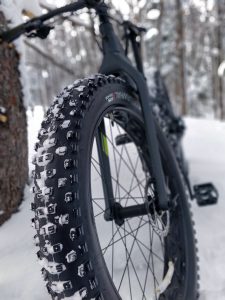
10. Emergency items
If you plan to take any kind of bike on an epic backcountry journey, it’s always a good idea to be prepared, especially when it’s frigid outside. Travel with a lighter or a fire starter, space blanket, map, compass, pocket knife and a light. It’s important to have these items on hand, just in case you need them at any point.
Fat biking is a unique experience that many enjoy. No need to stop cycling through the winter with these around! Happy biking!

